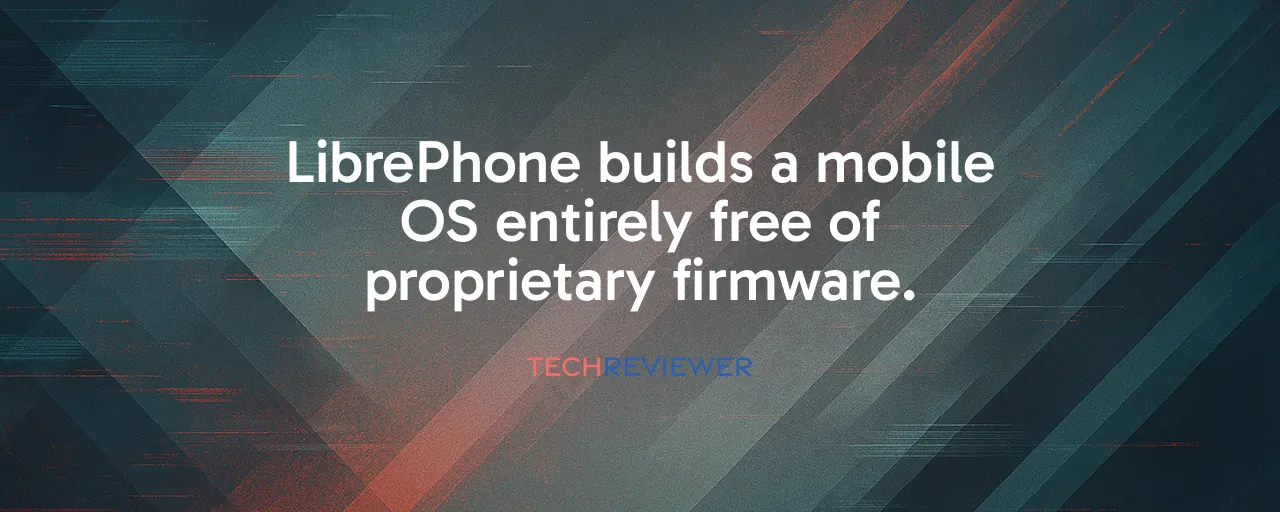A New Era for Mobile Freedom
For years, the Free Software Foundation has championed the right to control your own software. Now, with mobile phones as our primary computing devices, they're taking on a new frontier with the LibrePhone Project. Launched in October 2025, this ambitious initiative wants to give you complete freedom over your phone by building a mobile operating system free of proprietary firmware. Imagine owning a device where every line of code can be inspected, modified, or shared without restrictions. That's the dream driving LibrePhone, led by veteran developer Rob Savoye, who's diving into the complex world of Android's hidden proprietary components.
Unlike past efforts that tinkered around the edges, LibrePhone aims for total software freedom. It builds on the open-source foundation of LineageOS, a popular Android alternative, to systematically replace closed-source drivers and firmware blobs that control critical hardware like GPUs, cameras, and modems. The project taps into four decades of FSF's advocacy for user rights, recognizing that phones aren't just gadgets but gateways to our personal lives, handling everything from texts to financial transactions. This makes the stakes higher than ever.
Why Proprietary Code Hurts Users
Proprietary firmware, often called binary blobs, is the black box of modern smartphones. These hidden chunks of code, created by companies like Qualcomm or MediaTek, run essential functions but remain off-limits to users. Research shows a staggering 82 percent of Android firmware releases include outdated GPU blobs, some unpatched for over three years, leaving devices vulnerable to attacks. In 2024, security researchers uncovered 289 bugs in GPU blobs using fuzzing techniques, proving these components are weak links in phone security. Without access to the code's inner workings, users can't audit or fix these flaws, relying instead on manufacturers who often abandon updates for older devices.
Beyond security, proprietary code locks users into a cycle of forced obsolescence. Manufacturers use these blobs to control repair options and limit device lifespans, pushing you to buy new phones when old ones could still work. LibrePhone wants to break this cycle by giving users the tools to maintain and update their devices indefinitely. It's about reclaiming ownership over the hardware you paid for, ensuring your phone serves you, not the other way around.
Learning From PinePhone and Replicant
To understand LibrePhone's potential, look at two earlier efforts: PinePhone and Replicant. The PinePhone, launched in 2019 by Pine64, took a hardware-first approach, offering a device designed for open-source operating systems like postmarketOS and Ubuntu Touch. By isolating proprietary modem firmware and using open interfaces, PinePhone showed that phones could run mainline Linux kernels with minimal closed code. Users reported decent call and text performance, though occasional lockups highlighted the work-in-progress nature. Its open schematics became a blueprint for community-driven development, proving hardware could align with software freedom goals.
Replicant, started in 2010 with FSF backing, tackled Android's proprietary components head-on. It replaced audio libraries and GPS functions on early devices like the HTC Dream but struggled to keep pace with Android's evolution. By 2014, Replicant supported only a few aging devices, unable to match modern hardware's complexity. Its shift to LineageOS as a base in 2017 kept it alive, but it never achieved full driver stacks. These projects teach LibrePhone that success hinges on picking the right devices to free and leveraging existing open-source work while navigating hardware's rapid evolution.
The Road Ahead and Its Hurdles
LibrePhone's vision is bold, but the path is steep. Modern phone hardware integrates proprietary firmware so deeply that reverse-engineering it feels like unraveling a tightly knotted rope. Companies like Apple and Google have billions to polish their ecosystems, while LibrePhone relies on a nonprofit budget and community passion. Features like optimized cameras or seamless app integration might take a backseat to freedom, potentially alienating users who value convenience. Cellular network compliance adds another layer of complexity, as modems must meet strict standards that proprietary firmware often handles effortlessly.
Yet, the project isn't without hope. Growing right-to-repair laws in states like California and New York, covering nearly 80 million Americans, push for more open access to device firmware. These regulations could ease LibrePhone's reverse-engineering burden. Plus, the rising awareness of privacy issues, fueled by incidents like the 2025 SharkBot Trojan exploiting weak app protections, gives LibrePhone a timely edge. By offering a system where users can verify every line of code, it appeals to those wary of surveillance or data leaks.
A Step Toward Digital Sovereignty
LibrePhone isn't just about code; it's about empowering people. A fully open-source mobile OS could extend phone lifespans, reduce e-waste, and give users real control over their digital lives. It challenges the idea that you don't truly own the devices you buy. While mainstream adoption might be years away, LibrePhone's incremental wins, like freeing specific phone models or creating reusable open components, could ripple across the industry. Privacy advocates, developers, and even governments seeking tech independence might find common ground here.
The project also sparks a bigger conversation about who controls our technology. As phones handle more sensitive data, from health records to banking, the need for transparency grows. LibrePhone may not replace Android or iOS overnight, but it's a reminder that users deserve a choice. Whether it's tweaking your phone's software or keeping it running long after the manufacturer moves on, this project is a step toward a future where freedom isn't just a buzzword but a reality.
